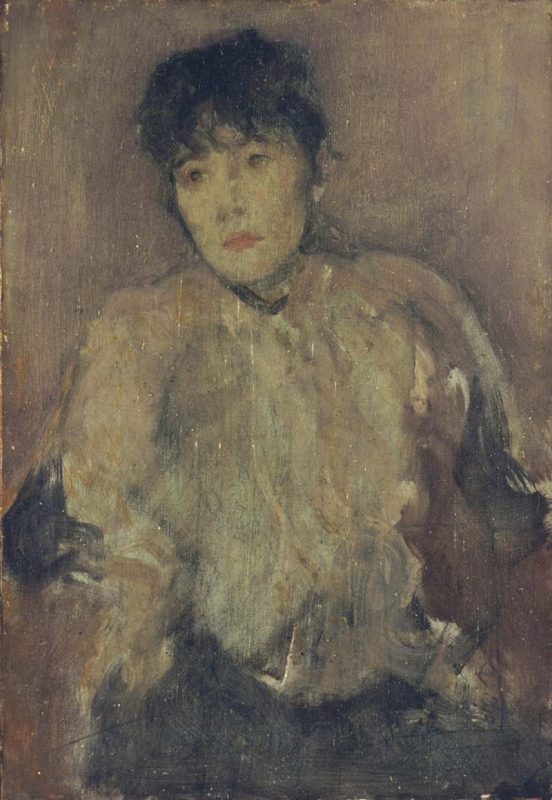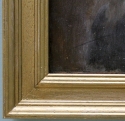Technique
The hardwood panel – a single panel about 1 cm thick – was primed in white, and secondly in grey. Upside down in the lower right corner there is a rough sketch in graphite pencil of a head and shoulders, possibly another portrait. Then, the other (correct) way up, the upper part of the figure and the scarf were drawn lightly with a fine pointed, hard, graphite pencil. There is less drawing towards the waist. 1
The figure was underpainted in dark grey and brown. The brighter shades – orange, pale pink flesh-colour and darker shades of pink – were then painted extremely softly with a big sable brush. The pale grey priming was left bare to form highlights.
Conservation History
The paint was excessively thinned in places, leading to poor film formation. The varnish is thick and yellowed. The panel is backed with an adhered framing device made from thin hardwood battens with mitred corners, possibly made when the picture was exhibited in 1905. 2
It is in generally sound condition despite a split at the lower right corner, and drying cracks and paint loss along the grain, with some retouching. 3
Frame
Whistlerian flat frame, dating from the 1920s, size 51.2 x 43.1 x 6.5 cm. 4
Last updated: 31st December 2020 by Margaret








